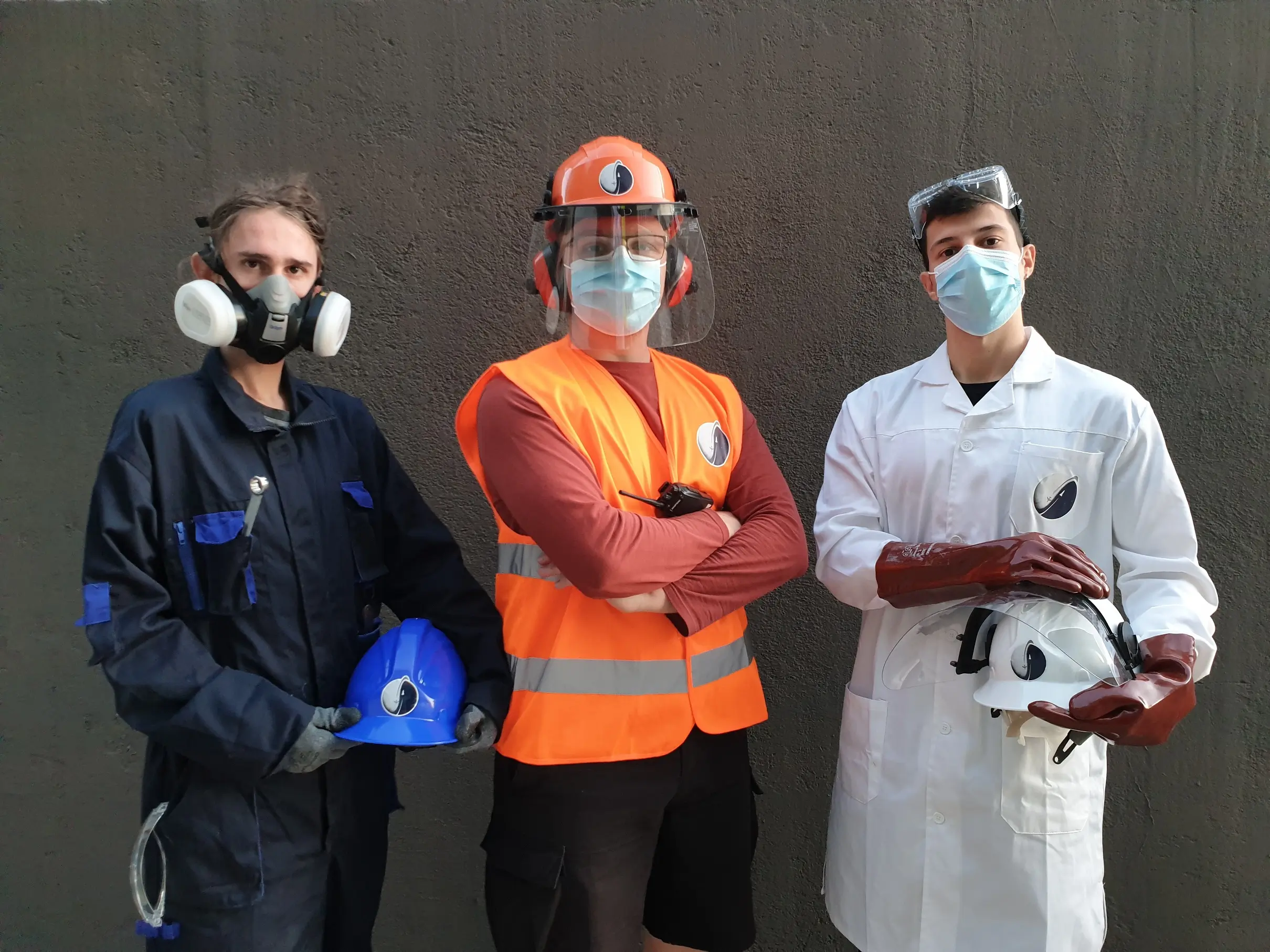General
In the structural subsystem, the team members are responsible for the design, analysis and construction of every part of what will eventually be used in the final rocket. Every rocket is an assembly that consists of several sub-assemblies and parts. Each one of those parts, is designed and manufactured with a different method and tool. As a result, the members of this sub-system need to be proficient with the use of the tools, materials etc. needed to produce quality parts for the rocket.
Design
Most of the parts used for the composition of each rocket are proprietary constructions of the Structural subsystem. For this very reason, all members and especially designers are required to be accustomed in using one or more CAD programs. The challenges that a design engineer has to face are quiet a few, the most basic of which is adapting his idea to the needs of each subsystem. Specifically, each subsystem relies on the structural for the design and assessment of the functionality of the missile compartment that serves it, for this reason the designer needs to have good knowledge the goal and the specificities of each subsystem as well as its participation during the launch and the flight.
During the design and dimensioning of each object, the designer must also take into consideration the individual characteristics of the processing of each material in order to make the work of each machine shop or manufacturer less complicated. Specifically, the target is for the material to be workable and for the part to require the least amount of machinery possible.
Analysis
After the design and functionality testing, the structural subsystem is called upon to ensure that each part to be manufactured will withstand the imposed loads and stresses during launch and flight. At this point, the so called analysis engineer takes over. The main method used is the “Finite Element Method”, in which each object, using one or more mathematical algorithms, is divided into a three-dimensional mesh. In this way, the computer perceives the spatial geometry of each object in the form of mathematical tables (matrices).
Afterwards, a series of loads are applied to the element virtually depending on the purpose of each analysis and it is now ready to be carried out. After the completion of the analysis, the analysis engineer is called upon to interpret the results in order to judge whether the component can proceed to manufacturing or needs to be returned to the design phase.
As can be seen in the image above, using a different software than the one that performed the analysis we can analyze the results and make assessments according to the failure criteria we have defined. Specifically, in this exact example we have chosen the Von Mises failure criterion, the maximum and minimum normal stress as well as their division into the so-called “zones of influence”.
We will proceed according to the safety factor which the ratio of the stresses that the material can endure, to those that essentially act on it. Acceptable values of this coefficient are all values >1 with more suitable in rocketry those ranging from 1.2 to 1.6.
Manufacturing
The last, and possibly one of the most important stages for a member of the structural sub-system, for them to apply the knowledge obtained during the phases described above, is that of manufacturing. At this stage, the geometry of each part is finalized, as is the material that each part will be manufactured of, and the members of the sub-system can either reach out to one of the team’s collaborating machine shops, or fabricate the part in-house using the tools and materials that the team provides in its lab.
If a part needs to be manufactured by an external collaborator or workshop, the team members need to communicate their ideas and thoughts effectively with the corresponding collaborator, so that the part is of high quality. In this process, it is very important that the members of the sub-system thoroughly examine the tolerances of each part, that is to minimize the manufacturing errors that may occur, and also to be able to modify the final part, if such a process is needed.
On the other hand, the team is able to produce a number of its parts in-house, by using the tools, materials in its lab and the know-how of its members. Many of the parts that the team uses are manufactured using composite material, such as carbon-fiber, fiber glass and Kevlar. The method used to produce some of the in-house build parts is called “Vacuum resin infusion process”.
In particular, a great number of layers of fabric sheets are placed one on top of the other, whereas the first and last layers are also covered with a net, responsible for the even distribution of the resin throughout the fabric’s surface. Then, an air-tight volume is created by using polymer sheets and a special tape. After the resin-import and air-extracting tubes are adjusted on the air-tight volume, discussed above, the air is driven outside from the air-tight volume with the use of a vacuum pump. During the pump’s operation, the resin is circulated through the air-tight system, protruding the air trapped inside, and taking its place in the process. The excess resin travels down the air extraction tube and is stored for later use in a separate container before it reaches the pump.
This process ends when all of air trapped inside is successfully removed and replaced with resin. The tubes are then secured and the system is left as is for a couple of days in order for the resin to harden and create the desired geometry. The next step is the visual inspection of the produced part that leads to further processing, if needed, in order to bring the part to its final form.
After every part of the rocket is successfully manufactured and collected, the structural sub-system is responsible for the final assembly of the rocket while abiding by all the required health and safety regulations opposed by the team. In order to ensure correct and successful assembly of the rocket, the members of the subsystem remain in close contact with every other sub-system during the assembly of each individual sub-assembly, while making last minute changes based on the needs of each one of them. Finally, every sub-assembly is fitted to the casing of the rocket which gives it its distinctive, elegant and sleek look. The very last step in this journey is the launch rod, aimed to the sky, as is our team’s main goal, to reach greater heights with every new rocket we create!




